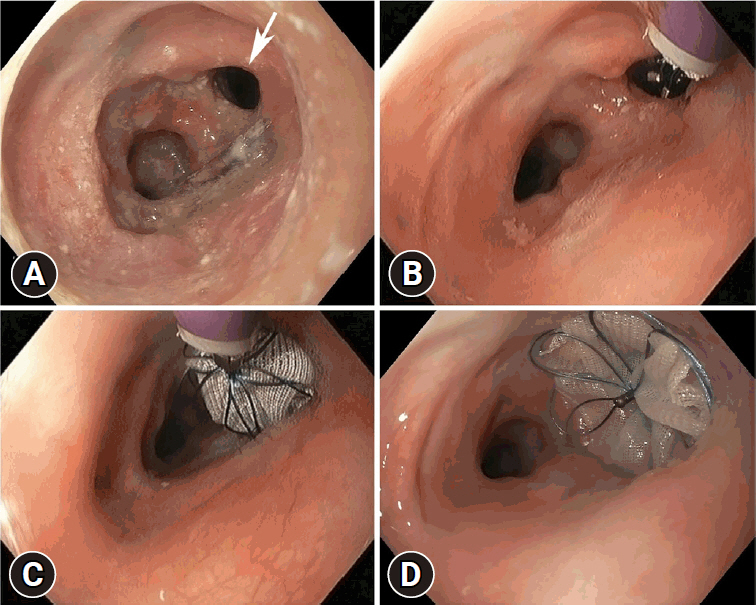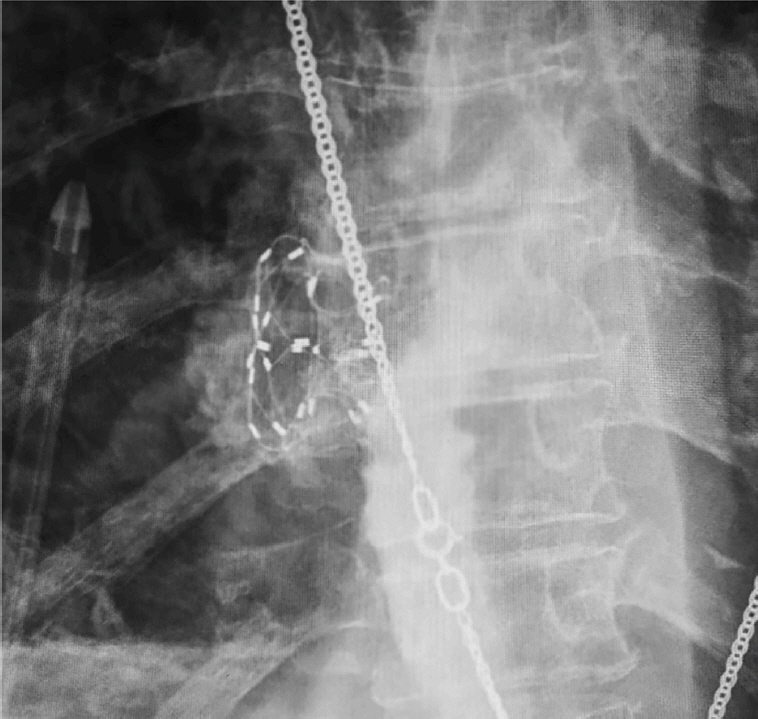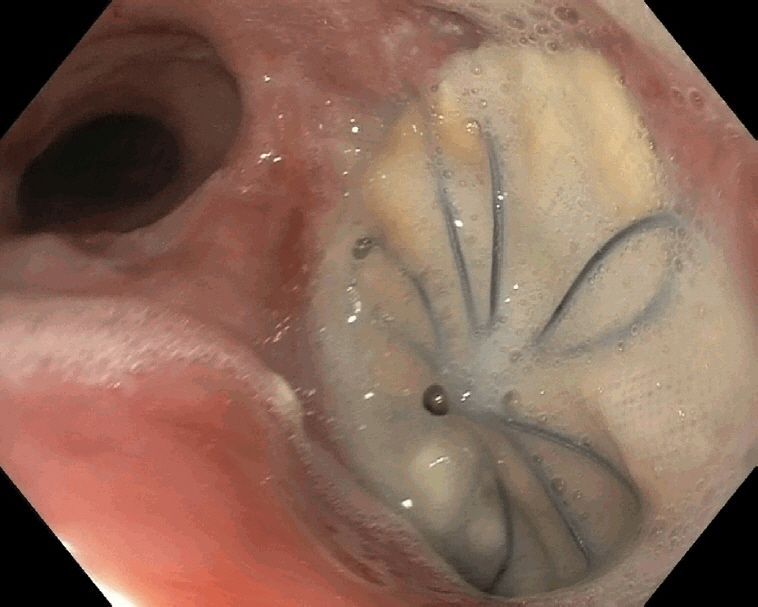Clin Endosc.
2024 Jul;57(4):547-548. 10.5946/ce.2024.037.
Closure of esophageal–pleural fistula using a cardiac occluder in a patient with systemic scleroderma
- Affiliations
-
- 1Department of General Surgery and Postgraduate Surgical Education, Zaporizhzhia State Medical and Pharmaceutical University, Zaporizhzhia, Ukraine
- 2Department of Faculty Surgery, Zaporizhzhia State Medical and Pharmaceutical University, Zaporizhzhia, Ukraine
- 3Multidisciplinary Surgical Department, University Clinic of Zaporizhzhia State Medical and Pharmaceutical University, Zaporizhzhia, Ukraine
- KMID: 2558113
- DOI: http://doi.org/10.5946/ce.2024.037
Figure
Reference
-
1. Lassaletta AD, Laham RJ, Pinto DS, et al. Successful closure of an esophagopleural fistula with an amplatzer occluder sealed with liquid copolymer, with 3-year follow-up and review of literature. Pleura. 2016; 3:1–6.
Article2. Rosendahl AH, Schönborn K, Krieg T. Pathophysiology of systemic sclerosis (scleroderma). Kaohsiung J Med Sci. 2022; 38:187–195.
Article
- Full Text Links
- Actions
-
Cited
- CITED
-
- Close
- Share
- Similar articles
-
- The Management of Delayed Post-Pneumonectomy Broncho-Pleural Fistula and Esophago-Pleural Fistula
- A Case of Pleural Effusion due to Vasculitis in Scleroderma
- A Case Demonstrating a Percutaneous Closure Using the Amplatzer Duct Occluder for Paravalvular Leakage after Tricuspid Valve Replacement
- Late Migration of Amplatzer Septal Occluder Device to the Descending Thoracic Aorta
- Percutaneous Closure of the Acquired Gerbode Shunt Using the Amplatzer Duct Occluder in a 3-Month Old Patient




